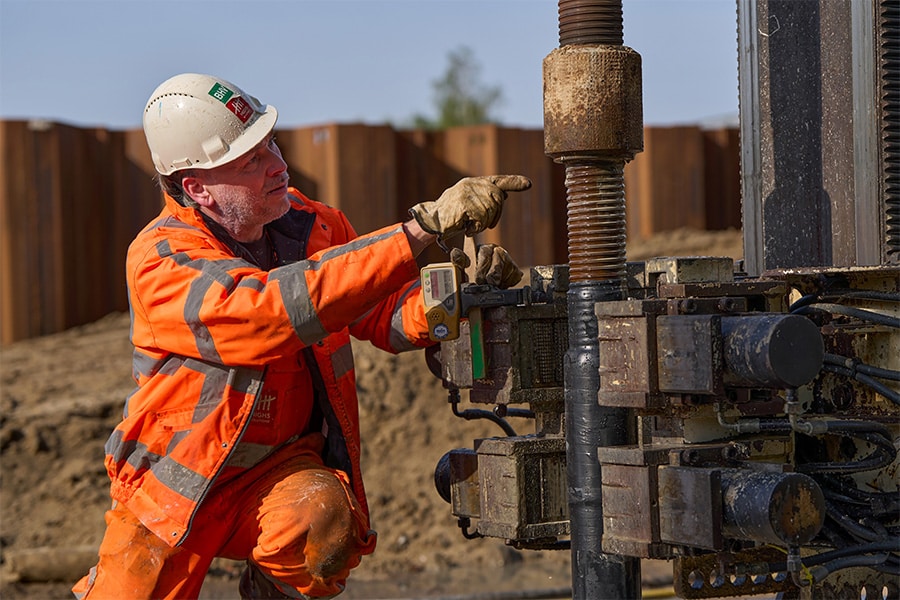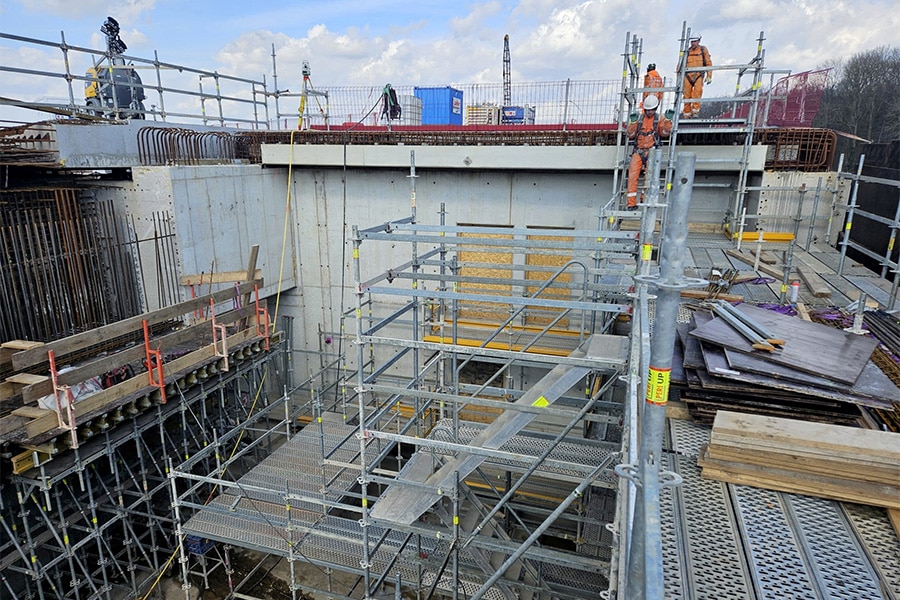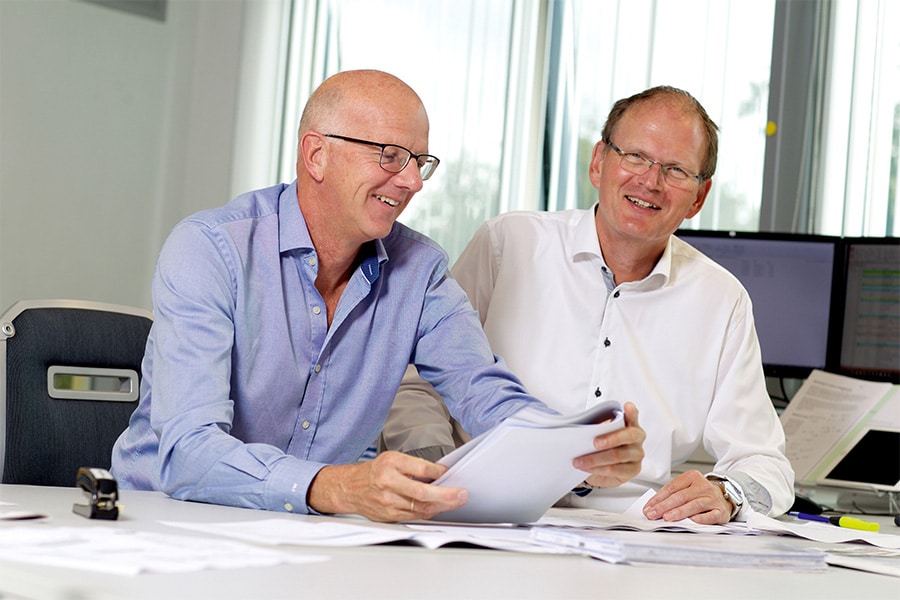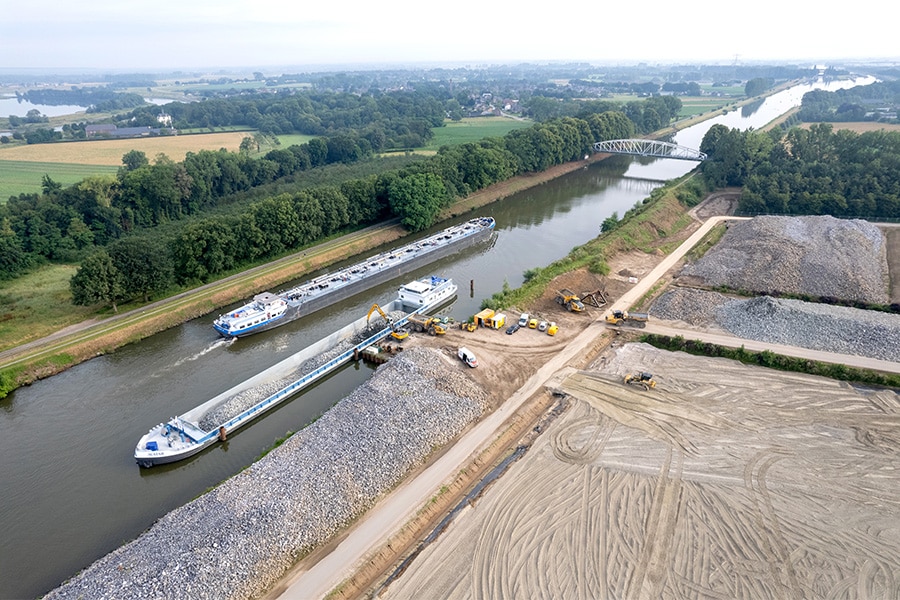
Juliana Canal: A mega project with 180 machines, 200 men and nearly 1.5 million tons of soil
In South Limburg, Rijkswaterstaat is working with contractor Van den Herik-Sliedrecht to widen the Juliana Canal. Between Berg aan de Maas and Obbicht, the canal has been drained over a length of 4 kilometers. A special and unique project with the biggest challenges being time and size. That makes the project a big logistical puzzle. How do you steer everything in the right direction? This is what project manager Krijn Drijvers of Rijkswaterstaat and project leader Robin Koorengevel of Van den Herik-Sliedrecht tell us.
Just a little longer and then in April the first barge will be sailing through the Juliana Canal again. Due to the widening and deepening, the canal is suitable for two-barge push tugboats of 190 meters long, 11.40 meters wide and with a draught of 3.50 meters. The reopening is an important milestone. Since March last year, a lot of work has been done. An average of about 200 men are at work every day. Add to that the many machines, at the peak of the work 180 at a time, we can safely speak of a mega-project
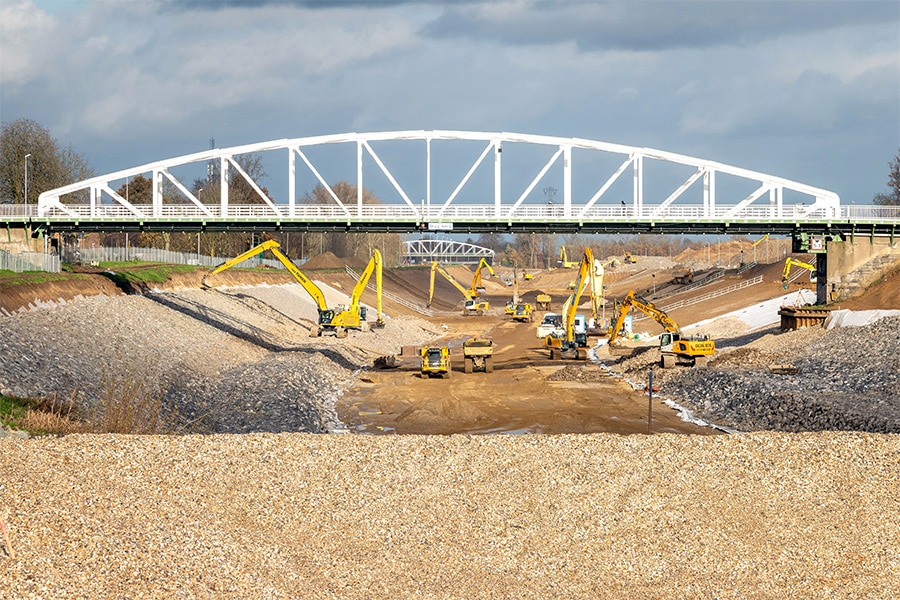
Tight planning and logistics
In late March 2024, Rijkswaterstaat received permission from then-Minister Mark Harbers to reclaim the Juliana Canal. The ink on the signature was not yet dry or Rijkswaterstaat and Van den Herik picked up the project at breakneck speed. "The time pressure is great," Krijn explains. "In March 2024 we received official permission, by the end of August we wanted to have completed all preparatory work for pumping out the canal. Think of the supply of stones and equipment, setting up the work site and dredging the canal at Born Lock." Where it normally takes at least one to two years to arrange everything, it was now done in four months. "We started immediately in March to prepare the two depot sites. For this we rented 30 acres of land from farmers and other landowners in the area. On these sites, we are storing quarry stone and other types of stone, about half a million tons in total. This is brought in by water, so it was important to have this ready before the canal was drained."
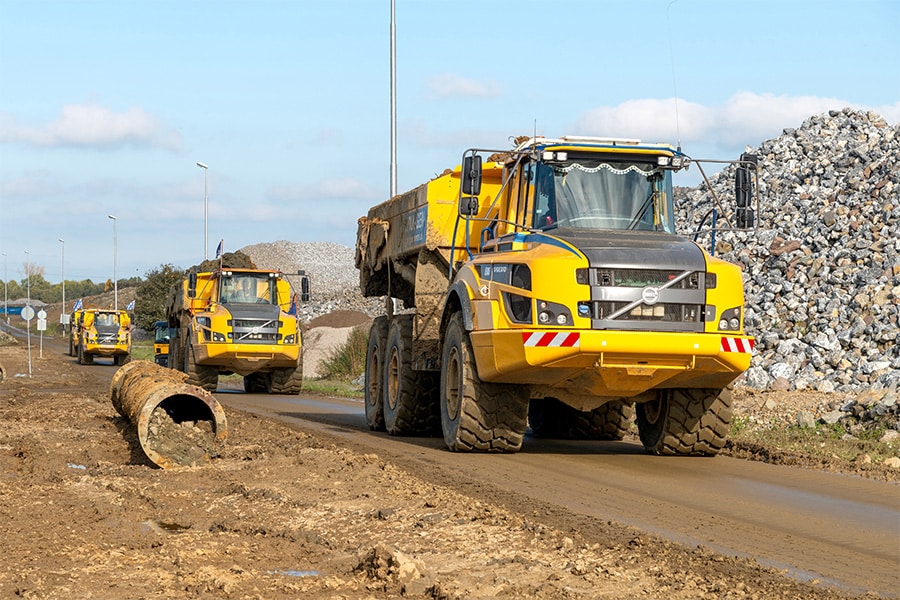
Sludge
When the Juliana Canal was built 90 years ago, thick layers of clay (and everything like it) and soil were brought in for the bottom. On top of that, a natural layer of silt developed over the years. Soil that now all needs to be excavated. Given the size and time constraints, the section has been divided into three work sections: North, Middle and South. Van den Herik is primarily responsible for all three sections, but has brought in Boskalis and Jac Rijk to carry out the earthwork in the Middle and South sections. Krijn: "This means that we can do three times as much work in the same amount of time. The work also continues in the evening and at night. Then all the trucks are refueled and we perform maintenance on the machines and the transport road." Already in an earlier phase, soil testing was done in the Middle and South work sections. "It was expected that work area North would contain a similar amount of silt. However, this turned out to be more. The disposal required creativity to meet the schedule." The contaminated sludge is transported by 22 ships from three locations directly to the two national depots, Hollandsch Diep and De Slufter. Robin: "We have developed a special soil press. Barge barges can enter the Born lock from the north side. On top of the lock is the soil press that transports the sludge horizontally over a distance of about 25 meters and brings it into the ships with a funnel. This is faster, safer and more efficient than a crane that has to pick up a shovel of sludge each time."
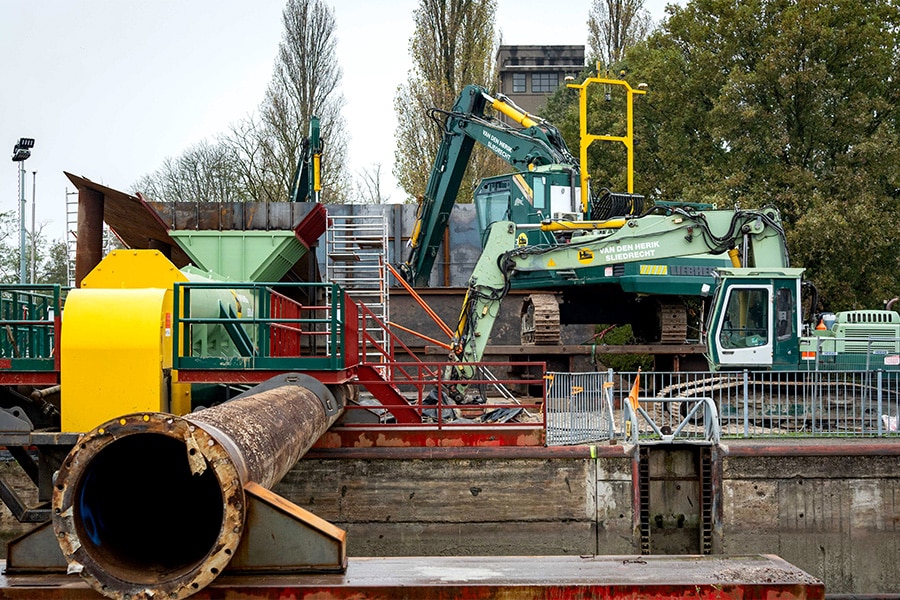
Safety
Many people and machines are working in and around the Juliana Canal at the same time. Safety is therefore a high priority. Krijn: "We have looked very closely at how we can strengthen each other's safety awareness. Each weekly meeting starts with the state of safety; did something happen last week, if so, how do we prevent it from happening again and are there any specific points of attention for next week?" Various safety measures are in place at the construction site. If you want to enter the construction site, you must have a construction pass. You only get this construction pass if you have demonstrably taken certain safety training courses. Every new construction team receives safety instructions. In addition, there is one-way traffic on the entire route, the transport road consists of two lanes, the entire route is enclosed with 12 kilometers of fencing and lighting, and the construction site is basically inaccessible to visitors. They are guided around in a vehicle to avoid collisions with large machines such as dumpers and trucks.
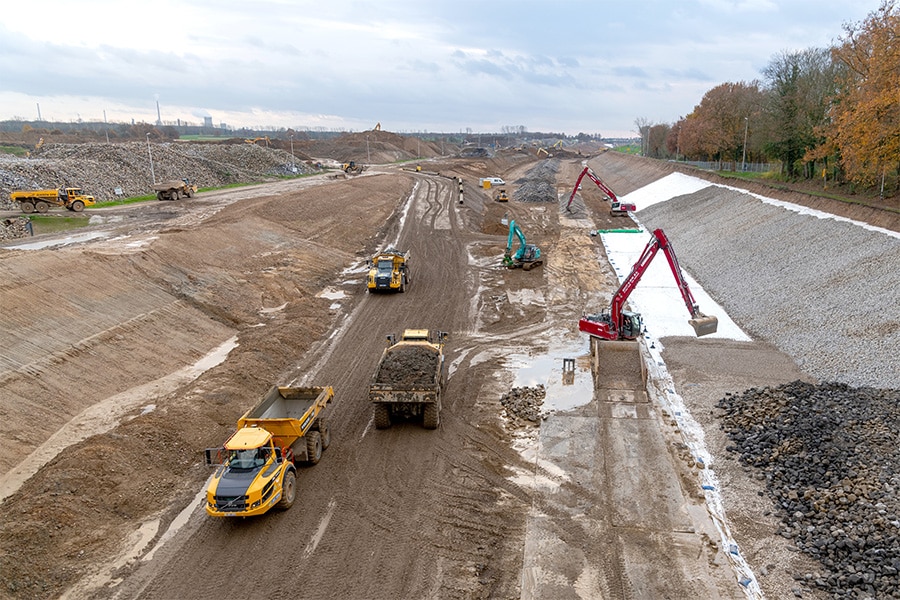
Work to be done
When the first ships pass through the Juliana Canal in April 2025, the work will not be finished. Rijkswaterstaat and Van den Herik expect to need another year or so to complete everything. This includes clearing the temporary dam, replacing the floating barrier, preparing the depot soil and redesigning the banks. Krijn: "We are not using the term 'the work is finished' in April. In recent months we have stored 1 million tons of soil, which must be removed. Then we will make the depot land suitable for arable farming again and lay out a beautiful footpath along the canal."
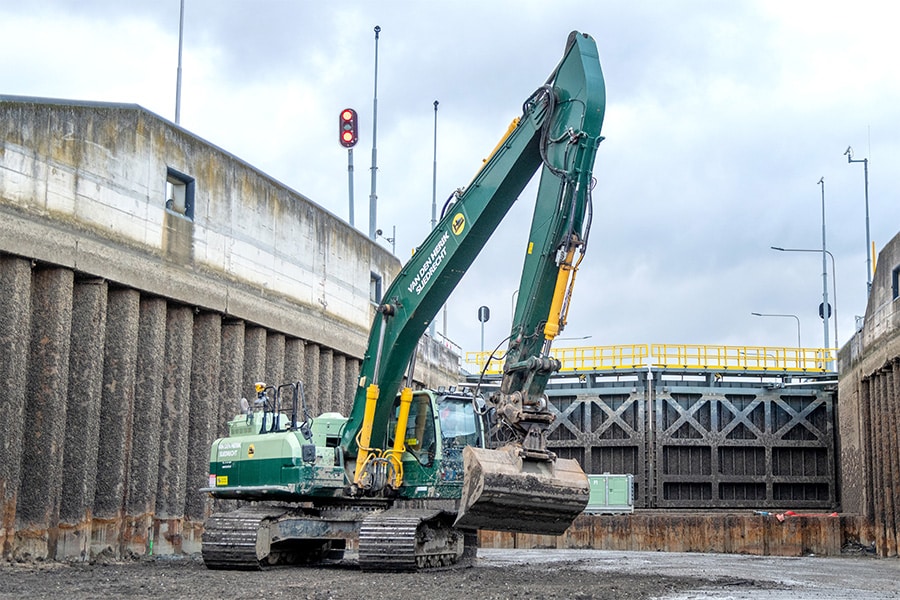
Constructive cooperation
Short lines of communication and fast switching are crucial in a project like this. What is important, according to Krijn and Robin, is that everyone knows what is going on at the construction site everywhere and at all times. "From day one, everyone felt the need to cooperate quickly and constructively. This also applies to the municipality and other agencies that had to issue the permits, among other things. To keep communication lines short, we work from temporary offices and training units on site. If a decision has to be made at any point, we can switch gears and act quickly." The beauty of this project, in the opinion of both gentlemen, is that it was picked up and carried out jointly as the ground, water and road construction industry. "It is certainly a leading project where we worked together as an industry and where we put the real civil builders from the Netherlands together to realize the project."
The Juliana Canal: an important shipping route
The Juliana Canal is part of the Meuse Route, an important shipping route to ports in Belgium, Germany and the Netherlands. The work also aims to make this route navigable for ships up to 190 meters long, 11.4 meters wide and
maximum 3.5 meters deep. The canal will be widened 15 to 20 meters and 1 meter deeper in some sections. During the
works, the Juliana Canal is partially inaccessible. Ships will therefore have to detour temporarily. The expected
opening to ships is in April 2025. Learn more at www.rijkswaterstaat.nl.
